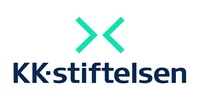GRIT ‑ Distributed Green Services on the Internet‑of‑Things
The goal of this project is to enable new types of future IoT applications, with a particular focus on applications that include many participants and thus require large scale information dissemination.
Background
Current estimations claim that there will be over 50 billion connected devices on the Internet, as soon as year 2020. Many of these devices will be sensors, actuators, and small computers. These will be embedded into different objects in people's everyday life, forming what we call the Internet-of-Things (IoT). However, current systems will not scale to the billions of devices that will need to communicate between each other on the IoT, especially if low response times are required for time critical scenarios. The research question in this project is to determine the most viable communication method for future proof IoT applications, which must support very frequent updates of all sensor and actuator values. In detail, at least ten updates per second and per device, of which it will ubiquitously exist over 50 billion of at the same time. As well as ensure that the information dissemination takes no longer than 100 ms between sources to sink, to create a good end user experience. The problem will be addressed by quantitatively compare traditional cloud based services with other types of communication methods, such as different types of distributed systems with varying degrees of decentralization. This in order to determine the parameters which impacts performance and how to adapt them to fit the specific needs of the IoT. In addition to this, developing demonstrators and prototypes with a focus on green services, such as remote monitoring of sensors and remote controlling actuators depending on the sensor information. These will then be applied in various scenarios ranging from city building to industrial environments, which can at a later stage be taken to production together with the participating companies.
Objectives
The goal of this project is to enable new types of future IoT applications, with a particular focus on applications that include many participants and thus require large scale information dissemination. It is paramount to solve this if the IoT shall expand beyond the simple applications we see today. This project will however focus on enabling IoT applications in typical green scenarios, such as large scale environmental monitoring and acting upon large amounts of sensed information to become more environmentally friendly.
The following academic project goals have been defined:
- Find which parameters that impacts the performance of different communication methods for the IoT, especially in terms of supporting large amounts of participants, achieving low response times, and managing high update frequencies.
- Evaluate the identified parameters to determine which communication method that is most viable for future proof IoT applications in green scenarios. In particular, supporting over 50 billion simultaneous participants, response times less than 100 ms, and update frequencies of at least 10 Hz.
- Create different prototype applications together with the participating companies to demonstrate the most viable communication method for green IoT scenarios and to show its superiority. As well as perform field trials on location at the participating companies.
Partner companies
Dohi Agency is a digital innovation group that aims to develop future digital services and products. Dohi Agency is a national player, with a head office in Umeå and subsidiaries in Stockholm and Sundsvall. But most importantly, they are very keen on becoming leaders in providing the best next generation services to their customers and one of their future directions is IoT services. Dohi Agency’s main contribution to the project will be to participate in the development of the demonstrators. As well as expand their portfolio to ensure their future as leading developers of next generation services.
Prevas is a business developer which focuses on developing Nordic industries and has leading expertise in embedded systems and industrial IT. Prevas aim is to provide innovative solutions that can create growth for them and expand the Nordic industries. Furthermore, Prevas has good industry relations and knowledge of industrial processes, which makes them a good partners for IoT research. Prevas main contribution to the project is to profile the project to fit the Nordic industries and to share their knowledge of the industrial processes.
Facts
Project period
160401-180331
Partners
- Dohi
- Prevas
Research centers
Research groups
Project leader

Project members

